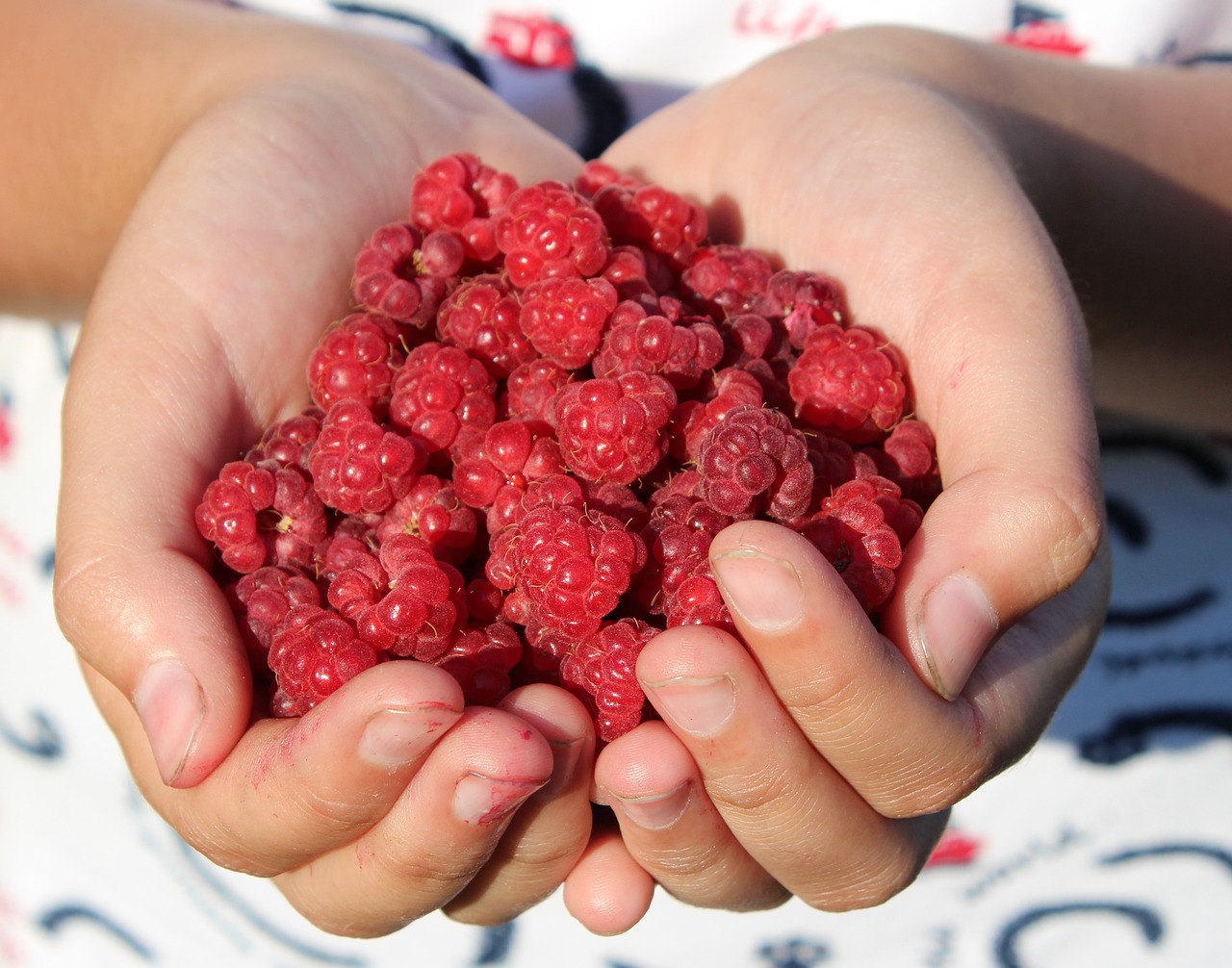The Hidden Benefits of Fir Trees You Never Knew Existed
Fir trees offer a variety of hidden benefits that extend far beyond their aesthetic appeal. These evergreen giants not only enhance the beauty of landscapes but also provide ecological, health, and economic advantages that many people are unaware of.
Fir trees belong to the Abies genus, which includes numerous species native to various regions around the world. They are particularly known for their tall trunks, needle-like leaves, and distinctive cones. Fir trees are often associated with Christmas traditions, but their significance stretches much further into environmental and health domains.

One of the most notable benefits of fir trees is their ability to improve air quality. Through the process of photosynthesis, they absorb carbon dioxide and release oxygen, contributing to a healthier atmosphere. Additionally, fir trees can filter pollutants and dust from the air, making them essential in urban environments.
Environmental Contributions
The environmental advantages of fir trees are manifold. They play a crucial role in maintaining biodiversity and providing habitat for various species. Here are some key points regarding their ecological significance:
- Habitat Creation: Fir trees serve as homes for numerous birds, insects, and mammals. Their branches provide shelter, while their foliage offers food sources.
- Soil Erosion Prevention: The extensive root systems of fir trees help stabilize soil. This prevents erosion, especially on slopes and in areas prone to landslides.
- Water Conservation: Fir trees contribute to the hydrological cycle by absorbing rainfall and releasing water vapor through transpiration, thereby maintaining local humidity levels.
Health Benefits

In addition to their ecological roles, fir trees have several health benefits that often go unnoticed. The aroma emitted by fir trees can have therapeutic effects on mental well-being. Here are some health-related advantages:
- Aromatherapy: The essential oils derived from fir trees are used in various aromatherapy practices. They are known for their calming properties and can help reduce stress and anxiety.
- Air Purification: The ability of fir trees to filter air pollutants contributes to respiratory health. Planting these trees near homes and workplaces can create a healthier living environment.
- Allergy Relief: Some studies suggest that the presence of fir trees may alleviate symptoms of allergies by filtering out allergens from the air.
Economic Advantages

The economic benefits of fir trees are significant, especially in forestry and landscaping industries. Their timber is valuable for construction, furniture, and paper products. Here are a few economic points related to fir trees:
| Benefit | Description |
|---|---|
| Timber Production | Fir timber is sought after for its strength and versatility in construction. |
| Tourism | Fir trees attract visitors to parks and natural reserves, boosting local economies. |
| Christmas Tree Industry | Fir trees are popular as Christmas trees, supporting a seasonal agricultural market. |
The diverse benefits of fir trees make them an essential component of our ecosystems and communities. From enhancing air quality to providing economic opportunities, their significance is far-reaching and often overlooked.
Cultural Significance of Fir Trees
Beyond their ecological and economic benefits, fir trees hold a rich cultural significance in many societies. They have been celebrated in various traditions, folklore, and practices throughout history. Understanding this cultural aspect can deepen our appreciation for these magnificent trees.
Symbolism in Various Cultures
Fir trees are often associated with strength, resilience, and eternal life due to their ability to thrive in harsh conditions. Here are some symbolic meanings attributed to fir trees across different cultures:
- Native American Traditions: Many Native American tribes see the fir tree as a symbol of protection. They use its branches in ceremonies to ward off negative energies.
- European Folklore: In European cultures, fir trees are often linked to winter celebrations and are considered sacred during the winter solstice.
- Chinese Culture: The fir tree symbolizes longevity and strength, often featured in traditional art and decorations during the New Year.
Fir Trees in Celebrations
The use of fir trees in celebrations is perhaps most evident during the Christmas season. The tradition of using a fir tree as a Christmas tree dates back centuries. Here are some key points about this custom:
- Historical Roots: The practice originated in Germany during the 16th century, where families would decorate a fir tree with candles and ornaments.
- Modern-Day Celebrations: Today, many families around the world continue this tradition, decorating their homes with fir trees adorned with lights and ornaments.
- Environmental Awareness: The growing trend of choosing sustainably sourced or potted fir trees reflects an increasing awareness of environmental issues.
Fir Trees and Landscaping
In landscaping, fir trees are often chosen for their aesthetic appeal and functional benefits. They can enhance the beauty of residential and commercial properties while providing practical advantages.
Design Elements
Fir trees can be utilized in various landscaping designs. Here are some popular ways to incorporate them:
- Privacy Screens: Tall fir trees can serve as natural privacy barriers, shielding properties from views and noise.
- Windbreaks: Planting fir trees strategically can reduce wind speed, protecting homes and gardens from harsh weather conditions.
- Seasonal Color: Different species of fir trees provide year-round color, with their rich green foliage standing out against seasonal changes.
Maintenance Considerations
While fir trees add beauty to landscapes, proper maintenance is essential to ensure their health. Here are some tips for caring for fir trees:
- Watering: Young fir trees require regular watering to establish strong root systems. Ensure consistent moisture, especially during dry spells.
- Pruning: Regular pruning helps maintain the shape of the tree and removes any dead or diseased branches.
- Pest Control: Monitor for pests such as aphids or bark beetles that may damage the tree. Use organic pest control methods when possible.
The Role of Fir Trees in Climate Mitigation
Fir trees play a pivotal role in climate change mitigation efforts. Their ability to sequester carbon makes them valuable allies in combating global warming.
Carbon Sequestration
The process of carbon sequestration involves capturing and storing atmospheric carbon dioxide. Fir trees contribute significantly to this process:
- Growth Rate: Fir trees have a relatively fast growth rate, allowing them to absorb carbon dioxide more quickly than slower-growing species.
- Longevity: Many fir species can live for several decades, continuing to capture carbon throughout their lifespan.
- Afforestation Projects: Planting fir trees in deforested areas is an effective strategy for restoring ecosystems and enhancing carbon capture.
Biodiversity Support
The presence of fir trees in the landscape also supports biodiversity. They create habitats for countless species of flora and fauna. By maintaining diverse ecosystems, we can improve resilience against climate change impacts.
The multifaceted benefits of fir trees extend deeply into cultural practices, landscape design, climate action, and more. Understanding these aspects allows us to appreciate their value beyond mere aesthetics.

Fir Trees in Urban Environments
As cities expand, the importance of incorporating greenery into urban landscapes becomes increasingly vital. Fir trees play a significant role in enhancing urban environments, providing numerous benefits to city dwellers and the ecosystem alike.
Improving Urban Air Quality
Urban areas often suffer from higher levels of pollution due to traffic, industry, and construction. Fir trees can help mitigate these effects:
- Pollutant Absorption: Fir trees absorb harmful pollutants such as nitrogen dioxide, sulfur dioxide, and particulate matter, improving the overall air quality.
- Oxygen Production: Through photosynthesis, fir trees release oxygen, which is essential for human health and contributes to a balanced urban ecosystem.
- Temperature Regulation: The presence of fir trees can help lower urban temperatures by providing shade and releasing moisture through transpiration.
Enhancing Aesthetic Appeal
Fir trees add beauty and character to urban landscapes. Their year-round green foliage creates a visually appealing environment. Here are some ways they enhance urban aesthetics:
- Landscaping Features: Fir trees can serve as focal points in parks and public spaces, adding natural beauty to otherwise hardscaped areas.
- Seasonal Decorations: During winter holidays, fir trees become symbols of celebration, often decorated with lights and ornaments in public squares.
- Wildlife Attractions: By planting fir trees in urban settings, cities can attract various wildlife species, enhancing the biodiversity of the area.
The Role of Fir Trees in Recreation
Fir trees also contribute significantly to recreational spaces. They provide opportunities for various outdoor activities that enhance community well-being.
Outdoor Activities
Parks and recreational areas featuring fir trees offer numerous activities for individuals and families. Here are some popular options:
- Hiking and Nature Trails: Fir tree forests often serve as beautiful hiking trails, allowing people to connect with nature while exercising.
- Biking: Many urban parks incorporate biking paths that wind through fir tree groves, offering cyclists scenic routes.
- Picnicking: The shade provided by fir trees makes them ideal spots for picnicking, encouraging families to spend quality time outdoors.
Educational Opportunities
The presence of fir trees in public spaces also opens doors for educational initiatives:
- Environmental Education Programs: Schools and organizations often conduct programs teaching children about the importance of trees and ecosystems in urban settings.
- Workshops and Community Events: Many communities host events centered around tree planting or nature walks, fostering a sense of community and environmental stewardship.
- Biodiversity Awareness: Educational signage in parks can inform visitors about local flora and fauna, promoting awareness of biodiversity conservation.
Culinary Uses of Fir Trees
Fir trees are not only beneficial for the environment; they also have culinary applications that many people may not be aware of. Various parts of the fir tree can be used in cooking and beverages.
Culinary Ingredients
The young needles and cones of fir trees are edible and can be used in various recipes:
- Fir Needle Tea: The fresh or dried needles can be steeped in hot water to make a refreshing herbal tea rich in vitamin C.
- Culinary Seasoning: Finely chopped fir needles can be used as a seasoning for fish dishes or salads, adding a unique flavor profile.
- Syrup Production: Fir tree sap can be harvested to create syrups that can be used in desserts or as a sweetener for beverages.
Nutritional Benefits
The culinary use of fir trees also comes with health benefits:
- Rich in Nutrients: Fir needles are high in vitamin C and antioxidants, which can help boost the immune system.
- Aromatic Qualities: The unique flavor of fir-infused dishes can enhance appetite and provide aromatic experiences that engage the senses.
The diverse benefits of fir trees encompass urban living, recreational activities, and even culinary uses. As we continue exploring their hidden advantages, it becomes evident that fir trees hold a vital place in our ecosystems and daily lives.
Fir Trees in Conservation Efforts
Fir trees play a significant role in conservation efforts aimed at restoring and preserving ecosystems. Their ability to thrive in various climates and their ecological benefits make them an ideal choice for reforestation projects.
Reforestation and Habitat Restoration
As global deforestation continues to threaten biodiversity, fir trees are often included in reforestation initiatives. Here are some key points on their role in habitat restoration:
- Native Species Planting: In areas where fir trees are indigenous, planting them can help restore natural habitats, providing shelter and food for local wildlife.
- Soil Improvement: Fir trees contribute to soil health by enhancing its structure and fertility through leaf litter decomposition, which adds organic matter.
- Climate Adaptation: By planting fir trees in diverse ecosystems, we can enhance resilience against climate impacts, helping ecosystems adapt to changing conditions.
Biodiversity Enhancement
The presence of fir trees can significantly enhance biodiversity. They create unique microhabitats that support various species:
- Support for Flora and Fauna: Fir trees provide a habitat for numerous plants, fungi, insects, birds, and mammals, contributing to a rich tapestry of life.
- Food Sources: Many animals rely on fir trees for food. Squirrels, birds, and insects feed on their cones and foliage, making these trees an integral part of the food chain.
- Pollinator Attraction: Fir trees can attract a range of pollinators, including bees and butterflies, which are essential for maintaining healthy ecosystems.
Fir Trees and Their Role in Sustainable Practices
In addition to their ecological benefits, fir trees are increasingly recognized for their role in sustainable practices. Their use in green building and sustainable forestry showcases their value in modern environmental initiatives.
Sustainable Forestry
Sustainable forestry practices ensure that logging activities do not harm the environment. Fir trees are often managed under these principles:
- Selective Logging: This method minimizes environmental impact by allowing the surrounding ecosystem to remain intact while harvesting timber sustainably.
- Certification Programs: Many fir tree products come from certified forests that adhere to strict environmental standards, ensuring responsible management.
- Carbon Offsetting: Fir trees play a pivotal role in carbon offset programs, allowing businesses to invest in tree planting as part of their sustainability strategies.
Green Building Materials
The timber from fir trees is valued for its strength and lightweight properties. Its applications in green building include:
- Construction Materials: Fir timber is used in framing, flooring, and furniture, offering a sustainable alternative to synthetic materials.
- Insulation Properties: Fir wood has natural insulating qualities, contributing to energy-efficient building designs.
- Aesthetic Appeal: The natural beauty of fir wood enhances interior spaces, promoting wellness through biophilic design principles.
Final Thoughts
The hidden benefits of fir trees are truly remarkable and multifaceted. From their significant contributions to environmental health and urban living to their roles in cultural practices and culinary applications, fir trees are invaluable assets to our ecosystems. Their ability to enhance air quality, support biodiversity, and contribute to climate change mitigation makes them essential in our fight against environmental degradation.
Moreover, as we face increasing challenges related to urbanization and climate change, recognizing the importance of fir trees can inspire sustainable practices and conservation efforts. Whether planted in urban parks, utilized in conservation projects, or enjoyed in our homes during festive seasons, fir trees serve as a reminder of nature’s resilience and beauty.
In conclusion, the myriad advantages of fir trees highlight the need for greater awareness and appreciation of these magnificent organisms. By embracing their benefits, we can foster a deeper connection with nature and contribute to a healthier planet for future generations.
